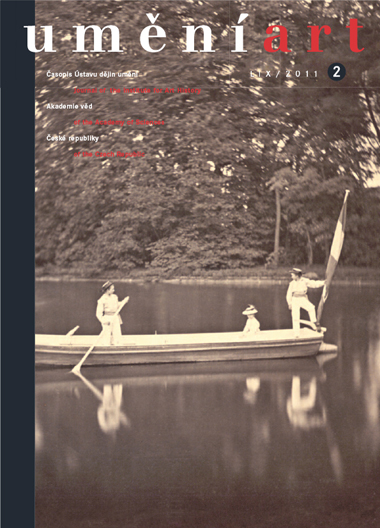Dalibor Lešovský
Ikonografie Brandlova obrazu Sv. Jáchyma a Anny - karmelitánská oslava Mariina mateřství a panenství
The painting St Joachim and Anna, created in the period when Brandl was at his peak, has thus far excited art historians' interest mainly for the quality of its artistic rendering, which testifies to the greatness of Brandl's gift. What has thus far remained outside the interest of researchers is the canvas's absolutely unique iconography, which in its uniqueness is no less remarkable than the work's artistry, and together they provide evidence not just of the artist's talent, but also of the singular intellectual environment of the Discalced Carmelites at the Church of the Virgin Mary Victorious. The painting was created for the Carmelite church in Malá Strana and in it the artist was inspired by an earlier painting he created for the altar extension in the nearby Church of St Joseph that portrays the mystical vision of St Teresa of Ávila. The bringing together of two temporally disparate scenes, which Brandl applied in the earlier painting was done again in his painting, of St Joachim and Anna. The painting from the Church of the Virgin Mary Victorious cannot be understood solely as a conventional portrait of the angel visiting Mary's parents and foretelling the birth of their daughter. Other events portrayed in the painting include a meeting at the Golden Gates, where according to tradition Mary was conceived, and common thanksgiving for God's blessing. Of significance for this interpretation is not just the architectural rendering of the accompanying scene, but above all several symbols whose use is unique in the context of the time the painting was made. Brandl's canvas draws both on the Marian motifs typical of mediaeval art and the motif of the 'cloudlet' and arrives at an altogether original artistic communication of Catholic dogma, which has its source in Carmelite literature of the 14th century. The meaning of the individual symbols and their connection to Carmelite tradition suggest that the painting was commissioned to represent a purely symbolic expression of virginity and maternity.
Full-text in the Digital Library of the Czech Academy of Sciences:
https://kramerius.lib.cas.cz/uuid/uuid:b660be10-dd4e-8518-a8e7-5ca6fb3198e5
< back

